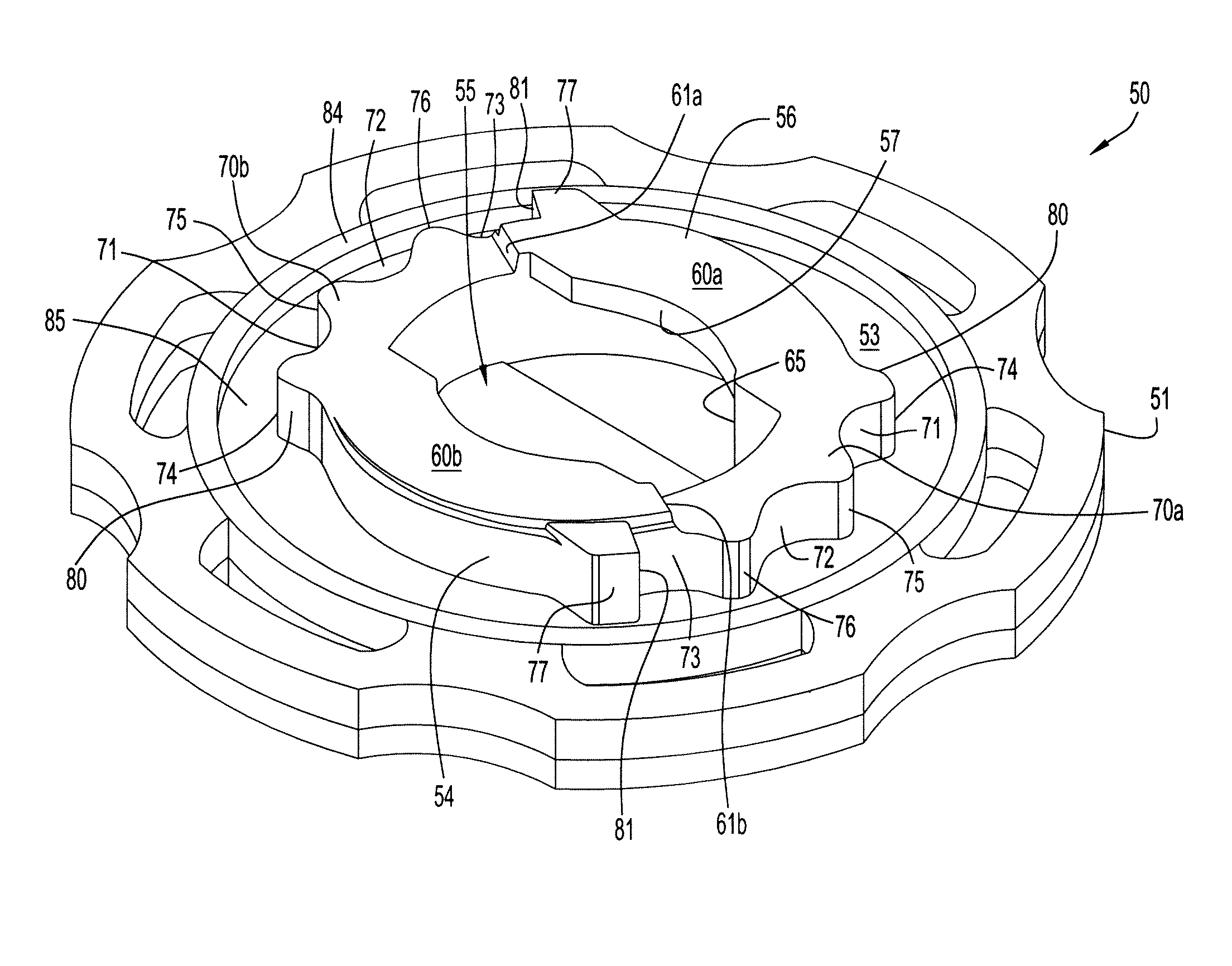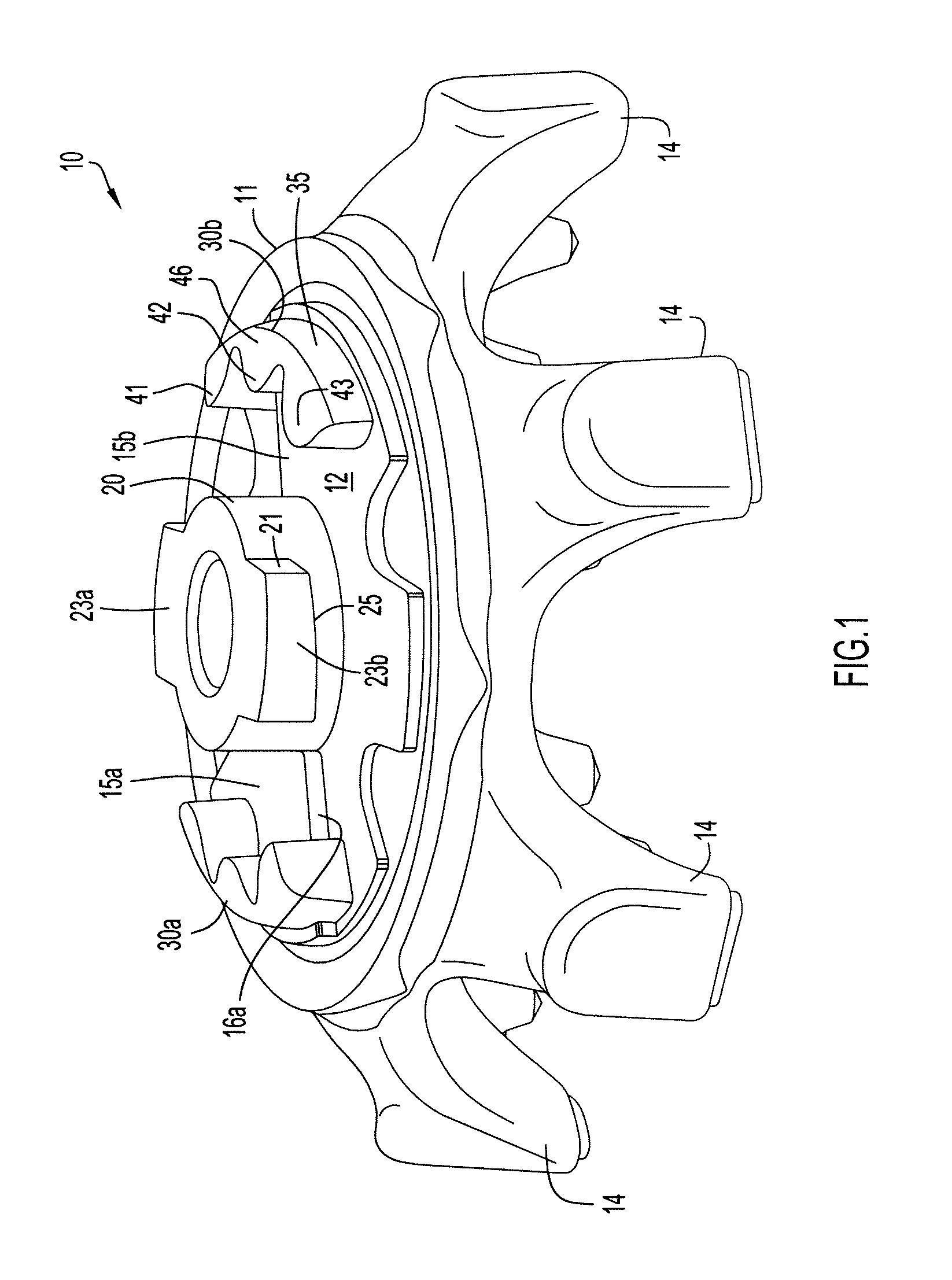Method and apparatus for interconnecting traction cleats and receptacles
a technology of traction cleats and receptacles, which is applied in the field of methods and apparatus for interconnecting traction cleats and cleat receptacles, and can solve the problems of not preventing the cleat from backing itself out, no visible, audible or tactile indication that full insertion had been achieved, and no visible, audible or tactile indication
- Summary
- Abstract
- Description
- Claims
- Application Information
AI Technical Summary
Benefits of technology
Problems solved by technology
Method used
Image
Examples
Embodiment Construction
[0073]The specific angular and linear dimensions set forth below are by way of example for particular embodiments to assist in an understanding of the illustrated structure; these dimensions are not to be construed as limiting the scope of the invention.
[0074]Referring specifically to FIGS. 1-11 and the embodiments disclosed therein, a traction cleat 10 comprises a hub 11 with a top surface 12 and bottom surface 13. The hub is generally circular but can be otherwise configured, symmetrically or asymmetrically about cleat attachment axis A. Ground engaging traction elements 14 extend generally downward from the hub periphery or bottom surface. It is to be understood that particular traction elements do not form part of the present invention and may be provided as static or dynamic elements in any number, array or orientation. In the particular embodiment illustrated in FIGS. 1-5 there are six traction elements 14 spaced at equal angles in an array that is symmetrical about cleat axis...
PUM
 Login to View More
Login to View More Abstract
Description
Claims
Application Information
 Login to View More
Login to View More - R&D
- Intellectual Property
- Life Sciences
- Materials
- Tech Scout
- Unparalleled Data Quality
- Higher Quality Content
- 60% Fewer Hallucinations
Browse by: Latest US Patents, China's latest patents, Technical Efficacy Thesaurus, Application Domain, Technology Topic, Popular Technical Reports.
© 2025 PatSnap. All rights reserved.Legal|Privacy policy|Modern Slavery Act Transparency Statement|Sitemap|About US| Contact US: help@patsnap.com



